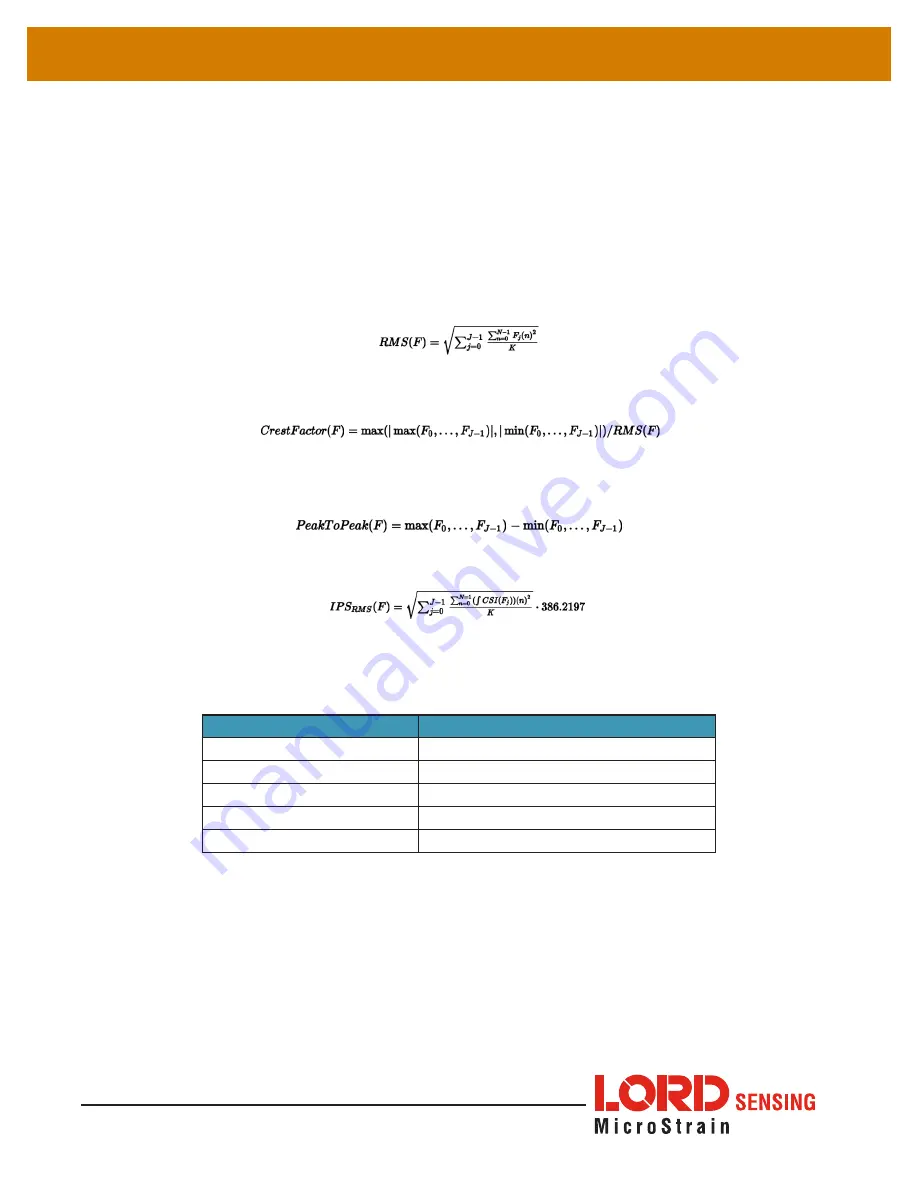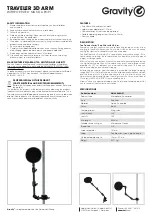
19
G-Link-200-OEM
USER MANUAL
5.4 Derived Output Channels
There are four derived data channels available for the G-Link-200. Using these data
channels for vibration analysis allows the ability to extend battery life while reducing data.
Each operation is performed on a window of data from the specified accelerometer axis.
The timestamp associated with each sweep is that of the last data point collected within that
window. The derived data output rate must be at least 32 times slower than the sample rate.
•
RMS
is calculated by accumulating the mean squared of each chunk, dividing by the number
of chunks in the window, and taking the square root.
•
Crest Factor
is calculated by taking the absolute maximum value from the window and
dividing by the RMS of the window.
•
Peak to Peak
is calculated by subtracting the smallest value from the window from the
largest value.
• Velocity
– IPS or m/s
The RMS of the IPS is calculated by determining a cubic spline of a chunk, analytically
integrating the cubic spline, taking the RMS of the cubic spline integral, and multiplying by
386.2197 to convert from Gs to in/sec
2
.
Name
Description
F
Window of sampled data
Fj
Chunk of sampled data
J
Number of chunks in the window
K
Number of samples in the window
N
Number of samples in the chunk
Table 7. Derived Channel Variables
5.4.1 Windows
When performing a derived calculation on sampled data a window is used to provide a rate
to transmit derived calculations and a range of time to derive from. The length of a window in
time is a single period of the derived rate and is given the timestamp of the first sample of the
next window.
















































